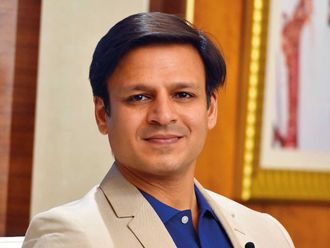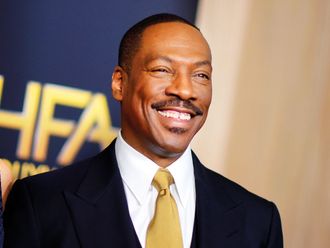Ukraine Crisis: What It Means for the West
By Andrew Wilson, Yale University Press, 248 pages, $17
It has been a tumultuous year for Ukraine. Last November a handful of middle-class activists took to the streets of Kiev. They were protesting against a decision by Viktor Yanukovych, the country’s burly kleptocratic president, to tear up an association agreement with the European Union. Instead Yanukovych accepted a bail-out from Russia.
As Andrew Wilson points out in his vivid study of the Ukraine crisis, nobody could have predicted what happened next. In February Yanukovych fled the country after his snipers shot dead over 100 people. A week later heavily armed gunmen seized the Crimean parliament and installed a pro-Russian puppet government. Next, Vladimir Putin annexed Crimea.
Then Moscow instigated an armed uprising in the Donbas region of eastern Ukraine.
Wilson was in Kiev when the protests on the Maidan reached their high-point in mid to late February. He had promised his wife to stay out of trouble; these were scary times. The danger, he writes, came not only from Yanukovych’s Berkut militia, who were busy firing live rounds at demonstrators. Just as terrifying were the so‑called titushki. These were paid government thugs, who were randomly roaming the streets, beating and killing.
Wilson — a senior fellow at the European Council on Foreign Relations and distinguished commentator on eastern Europe — calls the 2014 uprising a “curious concoction of a revolution”. In a sense, it was the anti-Soviet rebellion that never happened when Ukraine got independence in 1991; a lot of Lenin statues came down. It was also an “Occupy Wall Street movement”, a “Cossack rebellion” and part of a wider cycle of global protest. Much of it was strikingly old-fashioned and “19th century”. Protesters hurled cobblestones and Molotov cocktails. There was even a home-made medieval catapult.
According to the Kremlin what happened in Kiev was a “neo-Nazi coup”. Wilson, however, notes that Ukraine’s far-right were minor protagonists in a broader civil insurrection. On the frontline, he spotted “a few nationalists with flags and slogans”. But he also saw “old women helping cut up the pavements, and every variety of citizen forming human chains to pass the stones for the young men to throw”. Ultimately it was repressive laws and Yanukovych’s brutish tactics that tipped events into violence.
From its shaky post-Soviet beginnings Ukraine suffered from lousy governance and what Wilson names a “predatory elite”. But Yanukovych took graft to a new and spectacular level. After (fairly) winning the 2010 presidential election, he quickly demolished all of the democratic gains of the 2004 Orange Revolution. He jailed his chief political rival Yulia Tymoshenko, whose chaotic term as prime minister contributed to Ukraine’s dysfunctionality. Above all, Yanukovych set about looting the state and sharing out its assets among his immediate family. He built himself a palace, Mezhyhirya, complete with a helipad, golf course, pirate-ship restaurant and a zoo. Alas, his kangaroos failed to survive the Ukrainian winter.
Contrary to Moscow propaganda, he was under no physical threat when he decided to flee the country for Russia. Wilson says he left because “he had finished packing”. The president allegedly took $32 billion (Dh117 billion) with him (from $100 billion looted in just under four years), much of it furtively trucked across the Russian border. Other leading figures from his regime legged it too.
Kiev’s city airport, Wilson writes dryly, “was like a scene from a Martin Scorsese movie, with fleeing oligarchs taking money in hand luggage and fur-clad women tripping over their heels”.
The real coup took place not in Kiev but in Crimea, Wilson suggests. Many of the masked gunmen who seized the regional parliament in Simferopol were the same Berkut snipers “who had just been killing people in Kiev”, now fleeing arrest. Sergey Aksyonov, a pro-Russian politician whose party had won 4 per cent of the vote in 2010, became prime minister. Meanwhile, Russian troops seized key installations. Putin initially denied that these mysterious “little green men” were undercover Russians, only to later admit he’d been lying to the international community all along.
Putin’s brazen land-grab was the first formal annexation of territory in Europe since 1945. The immediate big losers were Crimea’s Tartars. The Tartars — whose claim to the peninsula long pre-dates Russia’s — snubbed a fake “referendum” held in March, which resulted in a vote for union with Moscow. Russia’s state media casts the Tartars as pro-Ukrainian fifth columnists. The Kremlin has banned Tartar leader Mustafa Jemilev from Crimean territory; young Tartars are now disappearing and turning up dead. This is depressing and familiar stuff: the modern persecution of an ethnic group deported by Stalin.
The response from Brussels to the extraordinary events unfolding on its eastern border was, Wilson rightly observes, both feeble and unconvincing. As Putin had correctly calculated, the EU wasn’t prepared to respond to Russian hard power with anything more than diplomatic platitudes and “grave concern”. Instead of anger, the European response was one of incomprehension — “why would anyone do such a thing?”.
The EU moved to tough sanctions against Russia only after the shooting down in July of Malaysia Airlines flight MH17, with the deaths of 298 passengers and crew.
Pro-Russian separatists blew the aircraft out of the sky using a Buk missile system, either captured or smuggled from Moscow. This was a terrible mistake but one that flowed directly from Putin’s decision to carve up Ukraine as a sovereign entity.
This is a lively account of a crisis that poses fundamental challenges for the west and may not be over yet. As Wilson notes, “Russia’s addiction to dangerous myths” makes today’s Europe a dangerous place. Additionally, he contends, some “very weird people” are in power in Moscow. According to Putin mythology, the west “humiliated” Russia in the 1990s and deprived it of territory that rightly belonged to the Soviet Union. In reality, it was Russians who were doing the humiliating, Wilson says — first, the oligarchs who dominated the Yeltsin era, and now Putin’s KGB pals, who have grown very rich indeed.
Putin’s grandiose project to redeem ethnic Russians stranded by the fall of the Soviet Union continues. How much further will the Russian president go in his reshaping of the European continent? Wilson devotes a chapter to examining the next possible candidates on the Kremlin’s hit-list: Moldova, Georgia and the Baltic states. All are watching nervously to see what Moscow does next. “The drama appears to have reached ... Act Four,” Wilson concludes. I’m not so sure. This may yet be only Act Two.
–Guardian News & Media Ltd
Luke Harding’s book is Mafia State: How One Reporter Became an Enemy of the Brutal New Russia








